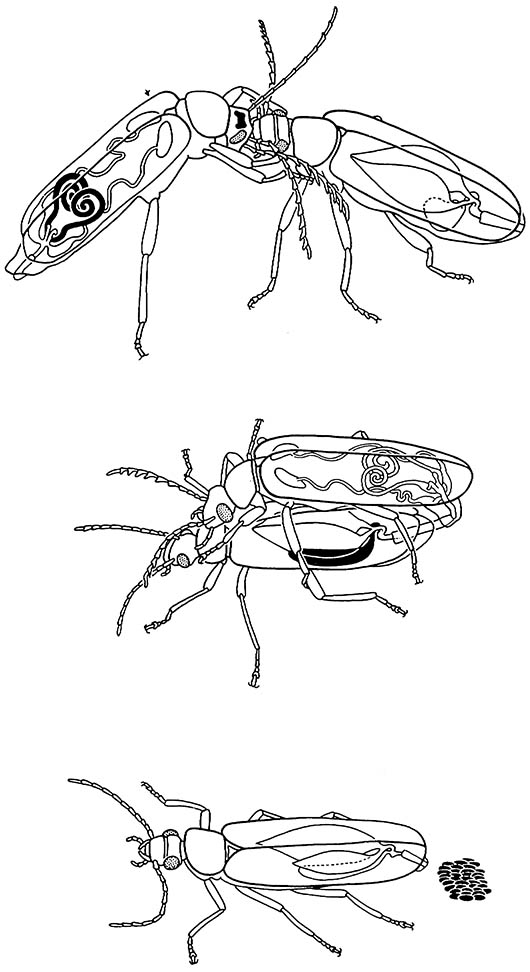Box 14.3. Chemically protected eggs
Some insect eggs can be protected by parental provisioning of defensive chemicals, as seen in certain arctiid moths and some butterflies. Pyrrolizidine alkaloids from the larval food plants are passed by the adult males to the females via seminal secretions, and the females transmit them to the eggs, which become distasteful to predators. Males advertise their possession of the defensive chemicals via a courtship pheromone derived from, but different to, the acquired alkaloids. In at least two of these lepidopteran species, it has been shown that males are less successful in courtship if deprived of their alkaloid.
Amongst the Coleoptera, certain species of Meloidae and Oedemeridae can synthesize cantharidin and others, particularly species of Anthicidae and Pyrochroidae, can sequester it from their food. Cantharidin (“Spanish fly”) is a sesquiterpene with very high toxicity due to its inhibition of protein phosphatase, an import- ant enzyme in glycogen metabolism. The chemical is used for egg-protective purposes, and certain males transmit this chemical to the female during copulation. In Neopyrochroa flabellata (Pyrochroidae) males ingest exogenous cantharidin and use it both as a precopulatory “enticing” agent and as a nuptial gift. During courtship, the female samples cantharidin-laden secretions from the male’s cephalic gland (as in the top illustration, after Eisner et al. 1996a,b) and will mate with cantharidinfed males but reject males devoid of cantharidin. The male’s glandular offering represents only a fraction of his systemic cantharidin; much of the remainder is stored in his large accessory gland and passed, presumably with the spermatophore, to the female during copulation (as shown in the middle illustration). Eggs are impregnated with cantharidin (probably in the ovary) and, after oviposition, egg batches (bottom illustration) are protected from coccinellids and probably also other predators such as ants and carabid beetles.
An unsolved question is where do the males of N. flabellata acquire their cantharidin from under natural conditions? They may feed on adults or eggs of the few insects that can manufacture cantharidin and, if so, might N. flabellata and other cantharidiphilic insects (including certain bugs, flies, and hymenopterans, as well as beetles) be selective predators on each other?




